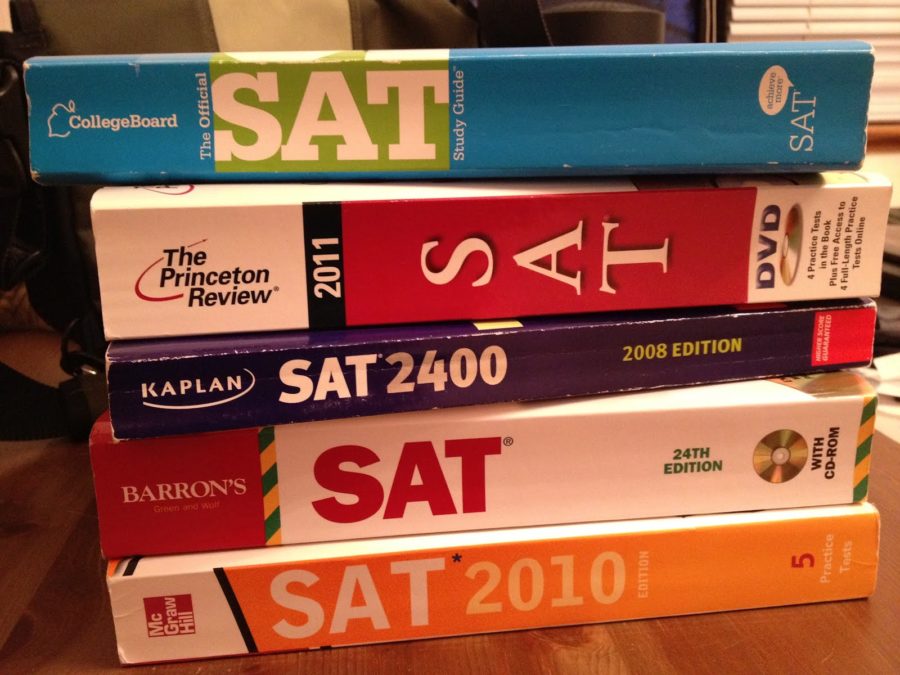The SAT has been known as the “near-impossible” college admissions test that stops students dead in their tracks when it comes time to try and conquer the gargantuan exam. However, in order to address growing complaints regarding the test and to better direct it at college and career readiness, in March 2014, the College Board announced a large amount of changes to the SAT. The old SAT was taken for the final time in January 2016 and the new version of this test was first administered on March 5, 2016, and for the first time, students were able to see the official version of the many new changes to the SAT.
The overall layout of the test underwent several alterations to be fit for the new demands of students and colleges. The SAT is now shifting back to a scoring scale of 1600, as opposed to the previous scale out of 2400 that was introduced in 2005. The new version has only four answer choices, whereas the old version had five. Also, points will no longer be deducted for giving incorrect answers. In both the old and new SAT, no points are deducted for not answering the question, but on the old version, one-quarter of a point was deducted for marking a wrong answer. Now, students are able to take a guess for every question, giving them a higher chance of getting more answers correct and achieving a higher score. Lastly, the sections of the SAT have been slightly altered from the previous three sections of math, critical reading, writing, and a mandatory essay. The New SAT has math, “evidence-based” reading, and writing. The essay has been made optional.
The new SAT begins with the “evidence-based” reading section. The old SAT had three separate reading parts within the one section. Now, there is just one full-length reading section. The test has been refocused on reading comprehension and has taken out the difficult vocabulary questions. The vocabulary that remains will be in-context vocabulary. The SAT has stopped using a passages of random subjects and now has a certain number of passages per subject, making it much more predictable. There is one passage about U.S. and world literature, two about history, and two science passages. The reading section also has new questions that ask for specific pieces of text that provide evidence to the previous question. This is to enforce reasoning and critical thinking while reading. Lastly, data charts have been added to a few of the five total passages that relate to the text and the student is asked to interpret this data in relation to the text. The main purpose of this change was for students to be able to better interpret the texts they are given.
The writing and language section tests grammar and writing logic. Questions now come out of a full passage in which the question locations are underlined, as opposed to the old SAT where each question was an individual sentence in which a student had to guess where the error was. The writing section used to include the essay and also had two separate parts of multiple choice questions within the overall section. The new SAT only has one writing section of multiple choice questions and does not include the essay. This section, like the reading, also made an effort to eliminate obscure words that are rarely used in society and instead only have vocabulary words that are used more often. There were many complaints regarding this previous issue, which was a major obstacle when trying to conquer the SAT.
The math section has now been split into two parts: non-calculator math, and calculator math. The old SAT had three math parts in which calculator use was permitted throughout the entire section. The math section now draws from three main areas: problem solving and data analysis, algebra, and “passport to advanced math.” In theory, this section has been designed to better show college readiness. The new SAT has also created more word problems which require students to read a small bulk of text about the math problem and solve it from what is given. The math section has also added trigonometry to the math subjects tested.
There have also been changes made around the SAT to provide assistance to low-income students. There have always been complaints about the test favoring the wealthy. Only those who can afford good SAT classes have been able to do well on the SAT. Now, The College Board has teamed up with Khan Academy, a well-known free online education provider, to create free SAT preparation videos for those who are not able to pay for classes. “For too long, there’s been a well-known imbalance between students who could afford test-prep courses and those who couldn’t,” says Sal Khan, founder of Khan Academy.













